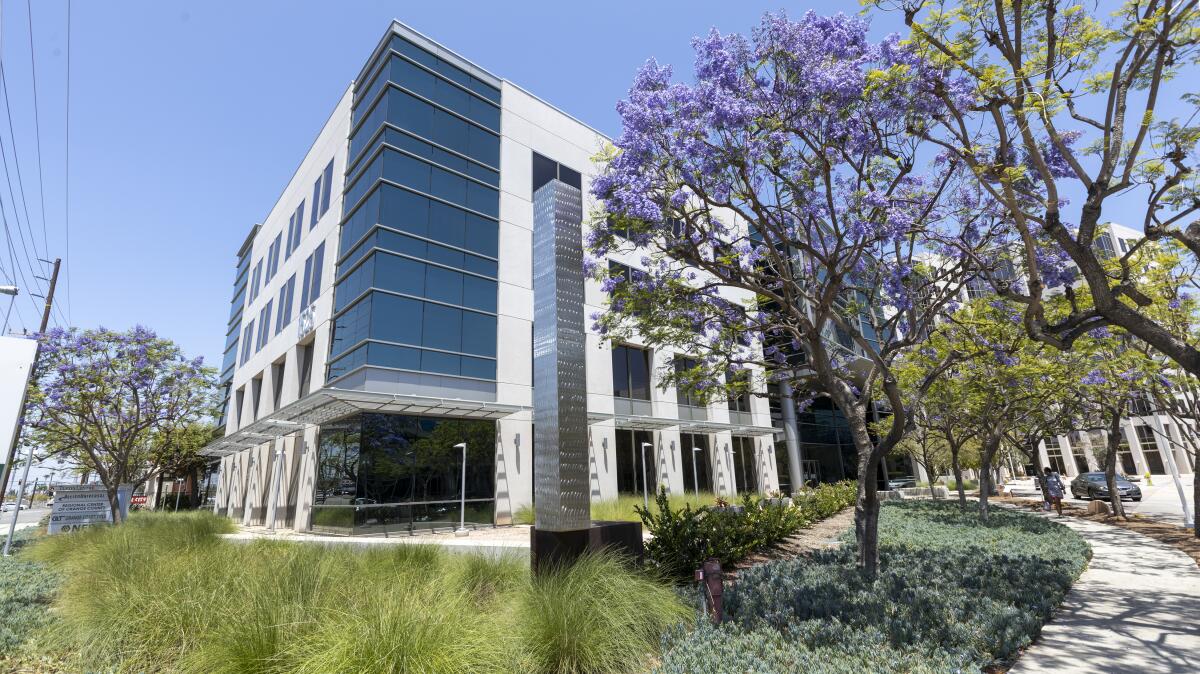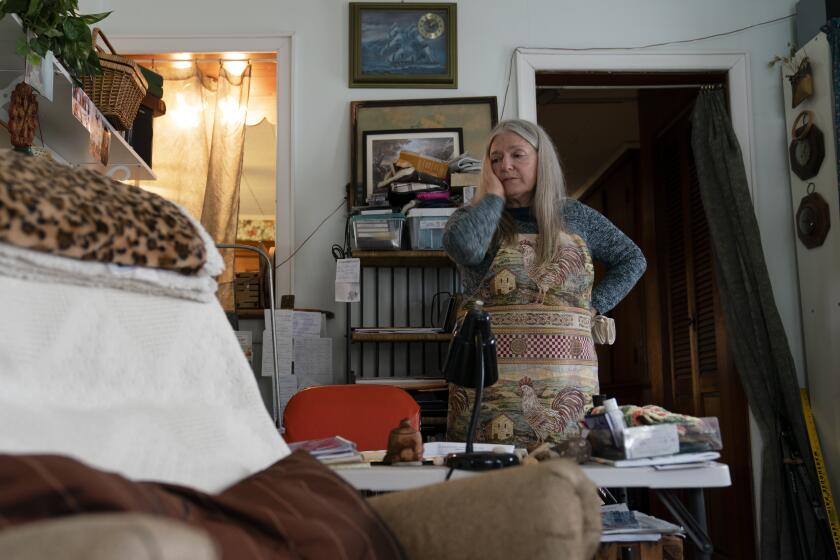Racial disparities persist at California regional centers for disabled kids, report says

Racial and ethnic gaps in spending on services for California children and teens with developmental disabilities have persisted, despite California investing tens of millions of dollars in efforts to address such disparities, a new report has found.
The report, released Wednesday by the legal advocacy group Public Counsel, found that at most of the California regional centers, which assist developmentally disabled people across the state, spending inequities had worsened for Latino youth during the last budget year. Even as that gap narrowed statewide, it was widening at many individual centers.
Despite long-standing awareness of the problem, “we still have a system of separate and unequal services for children with disabilities,” said Sharon Balmer Cartagena, directing attorney of the Children’s Rights Project at Public Counsel.
The report also found that as the COVID-19 pandemic dragged on, a growing number of young people overall were left “unserved” by their regional centers. More than a third of clients ages 3 to 21 did not get any services purchased by their regional centers in the last budget year, according to the report.
The California Department of Developmental Services, which oversees the coordination of services through regional centers, said it had not had sufficient time to review the report but added that “service access and equity remain a priority” for the department, which has launched initiatives that include implicit bias training for regional center staff and a “pay differential” for bilingual workers to increase access for people who speak languages other than English.
DDS is committed to exploring “additional strategies to reduce inequities” within the system, it said.
Amy Westling, executive director of the Assn. of Regional Center Agencies, said “we have made a tremendous amount of progress in certain areas.” Westling, whose association represents the network of 21 regional centers across California, said that “we’re all committed to making sure that people have access to the services that they need.”
California provides supportive services to children with developmental disabilities through a system of regional centers that contract with the Department of Developmental Services. The centers, which are private nonprofits, provide case management and arrange for services for people with cerebral palsy, autism, epilepsy and intellectual disabilities.
Disability rights advocates have complained that the system too often forces parents to fight for assistance. Regional centers “are putting up barrier after barrier for people to be able to access services that they have a legal right to,” said Judy Mark, board president of Disability Voices United, which advocates for people with developmental disabilities and their families.
Public Counsel found that during the budget year that ended in June, Latino youth ages 3 to 21 who received services were getting 80% of the spending levels for white youth of the same ages who received services.
That was an improvement over previous years, but the report found that a single center serving South Los Angeles and parts of Southeast L.A. County accounted for much of that improvement — and that at most other centers across California, gaps in spending between Latino and white children had worsened over six years.
Racial gaps also persisted for Asian American youth and were especially stark for children of “other ethnicity” but had closed last year for Black youth, the report found.
Westling said she was thrilled to see greater parity for Black youth. Regional centers have been trying to help families better navigate a complex system of services, she said, highlighting one initiative that provided for lower caseloads for workers who assist families who speak languages other than English and had gotten few services purchased for them.
Research in U.S. veterans provides fresh evidence that long COVID-19 can happen even after breakthrough infections following vaccination.
It “really highlights the importance of having someone there to assist and hold your hand while you navigate these systems,” she said.
The new analysis differs in key ways from how regional centers have reported their own progress: Public Counsel said that the centers calculate and report their expenditures per person based on the total number of consumers, whether or not those consumers got any services. The report instead examines the spending per person specifically among the youth who received services.
The group also examined how many young people didn’t get any services purchased through their regional center. Last budget year, that number rose to 36% — its highest point in six years of tracking — among youth ages 3 to 21. That “deprivation rate” ranged from roughly 23% up to nearly 52% among individual centers, the report found.
When families do not get services, “it’s not because they don’t want to,” said Fernando Gomez, one of the co-founders of Integrated Community Collaborative, a community group that aims to reduce spending disparities. “Many times it’s because they can’t.” Elizabeth Gomez, co-founder of the collaborative, said that families are routinely told by regional centers to seek help first from school systems, state programs or health insurers before the centers will fund many services, which can be a lengthy and frustrating process.
Westling, the head of the regional center association, cautioned that families who do not get services purchased by their regional centers may still be accessing them through other resources that their case manager is helping them find. Just because dollars are not being expended by the center “doesn’t mean in any way that services are not being provided,” she said.
Public Counsel noted that the growing share of children who did not get services purchased from regional centers could be “at least in part due to the pandemic,” but it also pointed to disparities in the rates at which youth of different races and ethnicities went “unserved.” For instance, Public Counsel found that 50% of Latino youth at the Regional Center of Orange County had not gotten services purchased in the last budget year, compared with 36% of white youth.
“What exists here in Orange County is discrimination,” said Evelyn Rodriguez, who lives in the city of La Palma and has an autistic son. Rodriguez, who was interviewed in Spanish, founded a group called Padres Mentores to support Latino families in the county. “When a family is Latino and wants services, they say, ‘Why? What for?’”
Larry Landauer, executive director of the Regional Center of Orange County, said that discrimination “should not be occurring” there, noting that 75% of its service coordinators were bilingual.
He said the Orange County center has been analyzing why some clients do not get services and found that some are reluctant to accept any form of public assistance, some are fearful about doing so, and some aren’t seeking services but have connected to the regional center as “an insurance policy” in case they need services in the future.
The question under state law is, “What does this person need? It has nothing to do if you’re white or Black or Hispanic. It’s absolutely, ‘What’s your level of need?’” Landauer said.
A Times investigation more than a decade ago found that public spending on autistic children in California differed by race, ethnic group and socioeconomic status, with the California Department of Developmental Services spending significantly more on white children who were autistic than Black or Latino kids with the same diagnosis.
Six years ago, California launched a program that has granted $66 million so far to regional centers and community groups for efforts meant to close racial and ethnic gaps in spending. (Among the grantees are Integrated Community Collaborative and Disability Voices United.) Brian Capra, senior staff attorney at Public Counsel and author of the report, said that “while California’s efforts were well-intentioned, its piecemeal approach to reform is inadequate for fixing deep, systemic discrimination that has dogged this system for decades.”
The Public Counsel report called for state lawmakers to convene an oversight hearing, assemble a task force to look at revamping funding formulas and roll back requirements that make it harder for families to get services. It also urged them to require regional centers to review all cases in which clients are not getting services and publicly report on why it is happening.
Public Counsel also pointed to South Central Los Angeles Regional Center as a possible model. The report found that the center achieved much more equitable spending among Black, white and Latino children in the last budget year after more than doubling its total expenditures.
Years ago, “it was a nightmare. I was asking for services and the response was always ‘No, no, we don’t do that, we don’t have that, we don’t offer that,’” said Rubi Saldaña, who has three children diagnosed with autism and lives in Downey. It was only after she and other parents began to mobilize, Saldaña said, that “something changed.”
More to Read
Sign up for Essential California
The most important California stories and recommendations in your inbox every morning.
You may occasionally receive promotional content from the Los Angeles Times.












